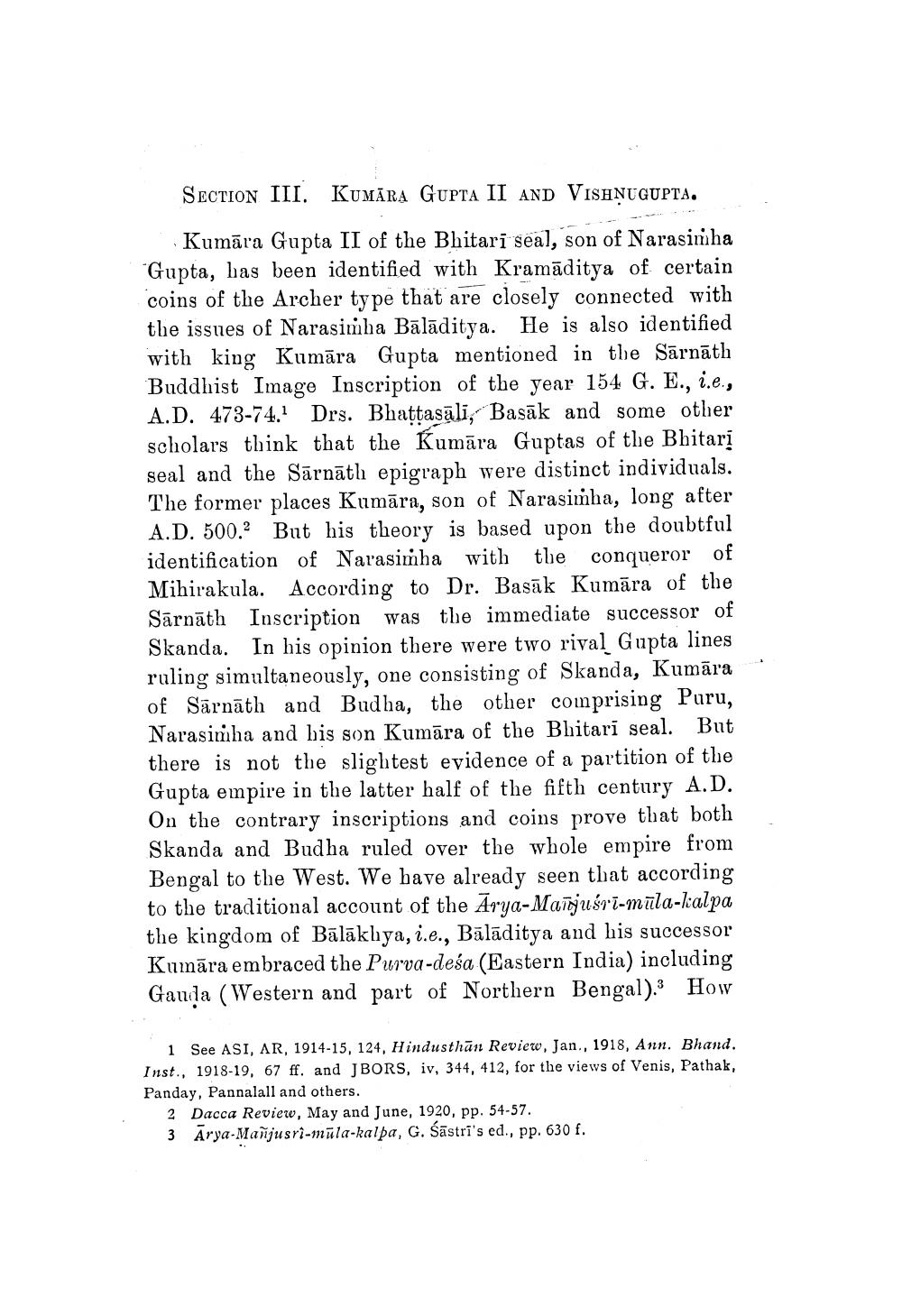________________
SECTION III. KUMĀRA GUPTA II AND VISHNUGUPTA,
Kumāra Gupta II of the Bhitarī seal, son of Narasinha Gupta, bas been identified with Kramāditya of certain coins of the Archer type that are closely connected with the issues of Narasimha Bālāditya. He is also identified with king Kumāra Gupta mentioned in the Sārnāth Buddhist Image Inscription of the year 154 G. E., i.e., A.D. 473-74. Drs. Bhattasāli, Basāk and some other scholars think that the Kumāra Guptas of the Bhitarı seal and the Sārnāth epigraph were distinct individuals. The former places Kumāra, son of Narasimha, long after A.D. 500.2 But his theory is based upon the doubtful identification of Narasimha with the conqueror of Mihirakula. According to Dr. Basāk Kumāra of the Sārnāth Inscription was the immediate successor of Skanda. In his opinion there were two rival Gupta lines ruling simultaneously, one consisting of Skanda, Kumāra of Sārnāth and Budha, the other comprising Puru, Narasimha and his son Kumāra of the Bhitari seal. But there is not the slightest evidence of a partition of the Gupta empire in the latter half of the fifth century A.D. On the contrary inscriptions and coins prove that both Skanda and Budha ruled over the whole empire from Bengal to the West. We have already seen that according to the traditional account of the Arya-Maijuśti-mūla-kalpa the kingdom of Bālākhya, i.e., Bālāditya and his successor Kumāra embraced the Purva-deśa (Eastern India) including Ganda (Western and part of Northern Bengal). How
1 See ASI, AR, 1914-15, 124, Hindusthān Review, Jan., 1918, Ann. Bhand. Inst., 1918-19, 67 ff. and JBORS, iv, 344, 412, for the views of Venis, Pathak, Panday, Pannalall and others.
2 Dacca Review, May and June, 1920, pp. 54-57. 3 Arya-Manjusri-mūla-kalpa, G. Šāstri's ed., pp. 630 f.




